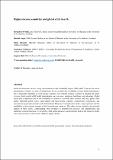Files in this item
Higher-income countries and global child health
Item metadata
| dc.contributor.author | O'Hare, Bernadette Ann-Marie | |
| dc.contributor.author | Lopez, Marisol | |
| dc.contributor.author | Hannah, Eilish Anne | |
| dc.contributor.author | Chimowa, Takondwa | |
| dc.contributor.author | Hall, Stephen | |
| dc.date.accessioned | 2023-01-12T00:38:00Z | |
| dc.date.available | 2023-01-12T00:38:00Z | |
| dc.date.issued | 2022-03-01 | |
| dc.identifier | 277436351 | |
| dc.identifier | 402539c1-7f37-46b4-bc76-d9d6d8e326c7 | |
| dc.identifier | 85122620880 | |
| dc.identifier.citation | O'Hare , B A-M , Lopez , M , Hannah , E A , Chimowa , T & Hall , S 2022 , ' Higher-income countries and global child health ' , Paediatrics and Child Health , vol. 32 , no. 3 , pp. 95-100 . https://doi.org/10.1016/j.paed.2021.12.004 | en |
| dc.identifier.issn | 1751-7222 | |
| dc.identifier.other | ORCID: /0000-0003-1730-7941/work/106397540 | |
| dc.identifier.other | ORCID: /0000-0003-0293-7334/work/106397996 | |
| dc.identifier.uri | https://hdl.handle.net/10023/26742 | |
| dc.description.abstract | Social and economic factors, acting via communities and households, impact child health. These are the social determinants of health. An array of international forces can affect the availability of these health determinants; this is especially important in lower-income countries. Government revenue is critical to funding the public services which provide child health determinants, such as water, sanitation, healthcare, and education. Global actors play a significant role in the availability of resources to provide these services and, thus, global child health. Important global actors: upper-middle and high-income countries, multinational corporations, and international organisations (such as the International Monetary Fund and other banks), impact policies and the availability of government revenue within lower-income countries. This short review considers the potential impacts of these actors. Understanding these dynamics is essential for advocacy, and paediatricians and healthcare professionals have a critical role. Child health advocates could critically analyse the impact of global actors and use these to advocate for children's right to health. | |
| dc.format.extent | 6 | |
| dc.format.extent | 358365 | |
| dc.language.iso | eng | |
| dc.relation.ispartof | Paediatrics and Child Health | en |
| dc.subject | Child health | en |
| dc.subject | Child rights | en |
| dc.subject | Determinants of health | en |
| dc.subject | Sustainable Development Goals | en |
| dc.subject | RA0421 Public health. Hygiene. Preventive Medicine | en |
| dc.subject | RJ Pediatrics | en |
| dc.subject | 3rd-DAS | en |
| dc.subject | SDG 3 - Good Health and Well-being | en |
| dc.subject | MCC | en |
| dc.subject.lcc | RA0421 | en |
| dc.subject.lcc | RJ | en |
| dc.title | Higher-income countries and global child health | en |
| dc.type | Journal article | en |
| dc.contributor.sponsor | Medical Research Council | en |
| dc.contributor.institution | University of St Andrews.Population and Behavioural Science Division | en |
| dc.contributor.institution | University of St Andrews.Infection and Global Health Division | en |
| dc.contributor.institution | University of St Andrews.School of Medicine | en |
| dc.identifier.doi | 10.1016/j.paed.2021.12.004 | |
| dc.description.status | Peer reviewed | en |
| dc.date.embargoedUntil | 2023-01-12 | |
| dc.identifier.url | https://authors.elsevier.com/a/1ePBu6EIwSkbrW | en |
| dc.identifier.grantnumber | 10_Bernie O'Hare | en |
This item appears in the following Collection(s)
Items in the St Andrews Research Repository are protected by copyright, with all rights reserved, unless otherwise indicated.

